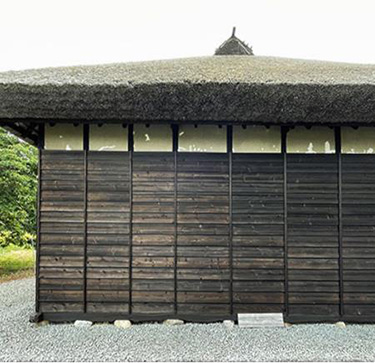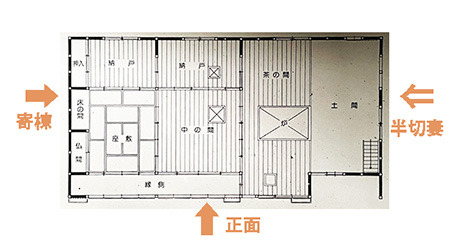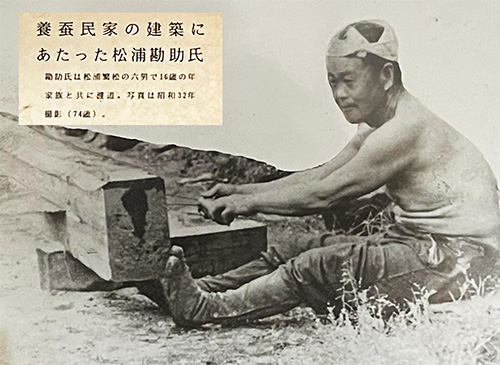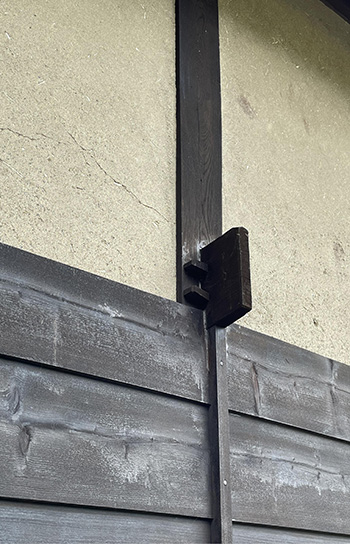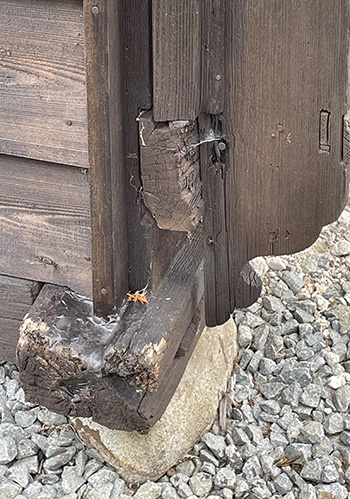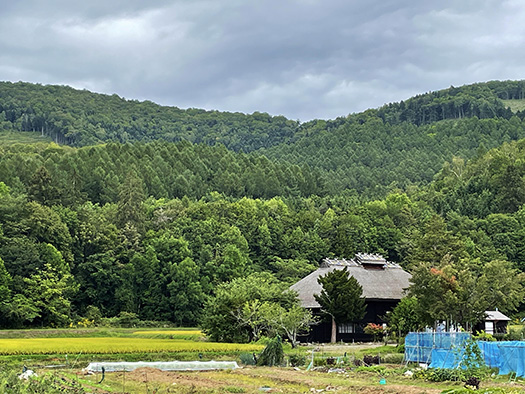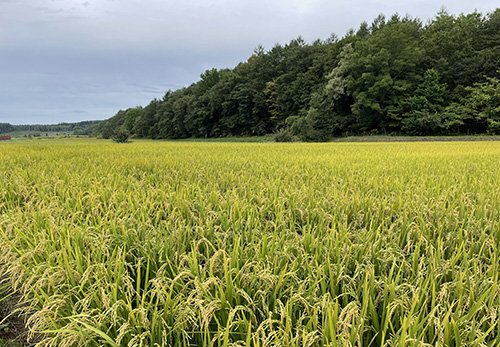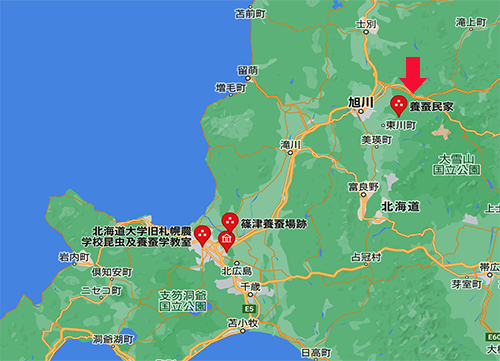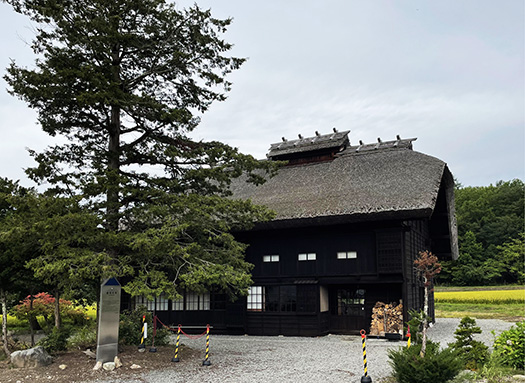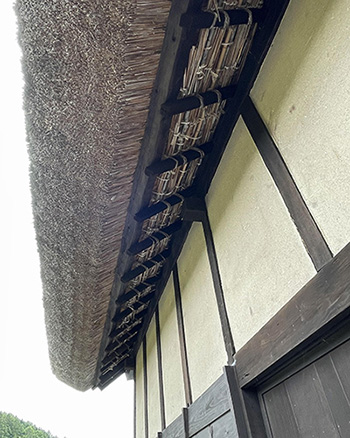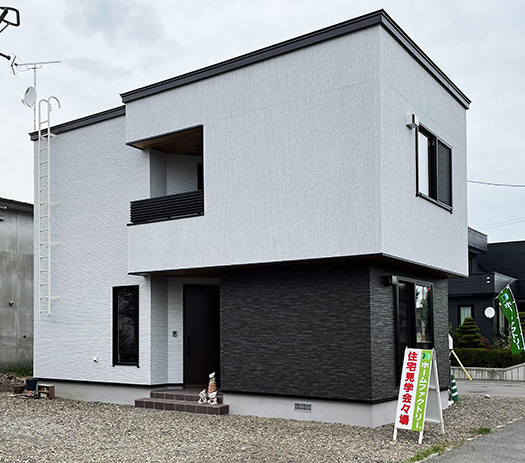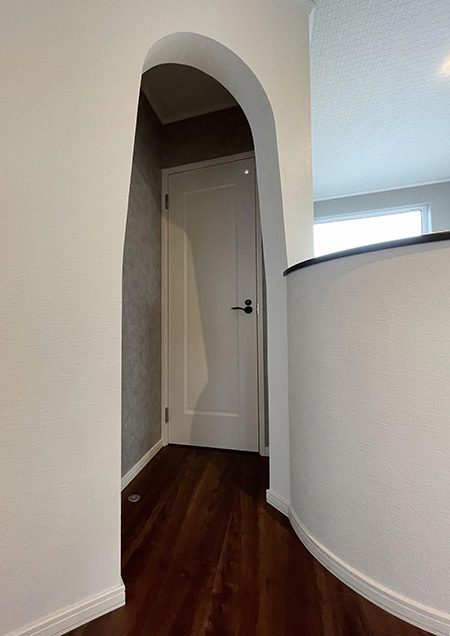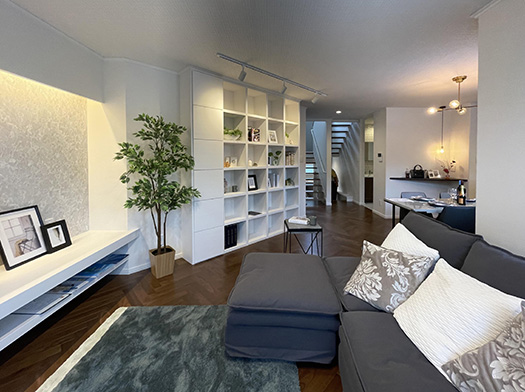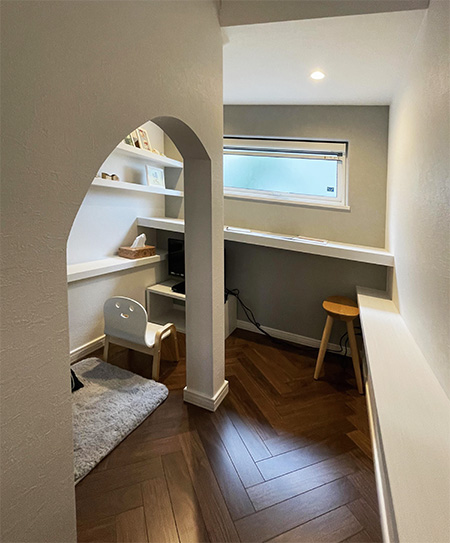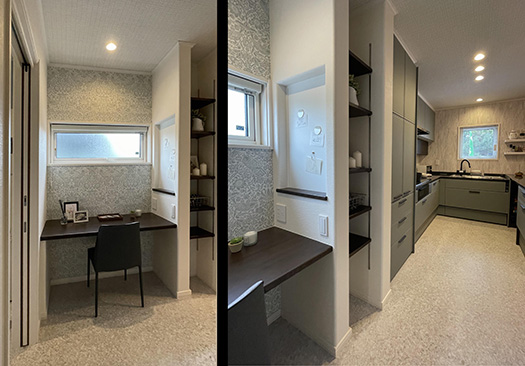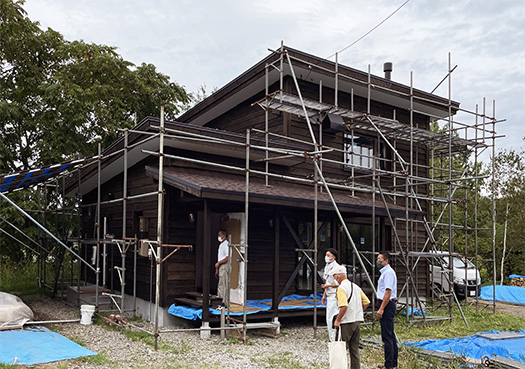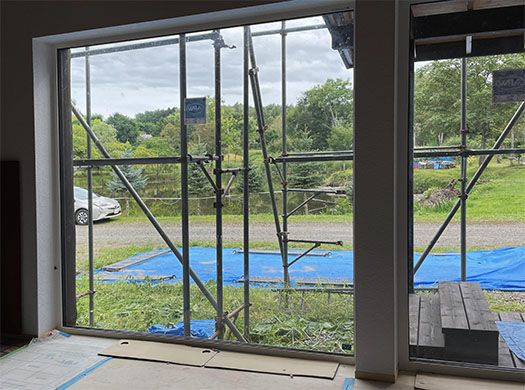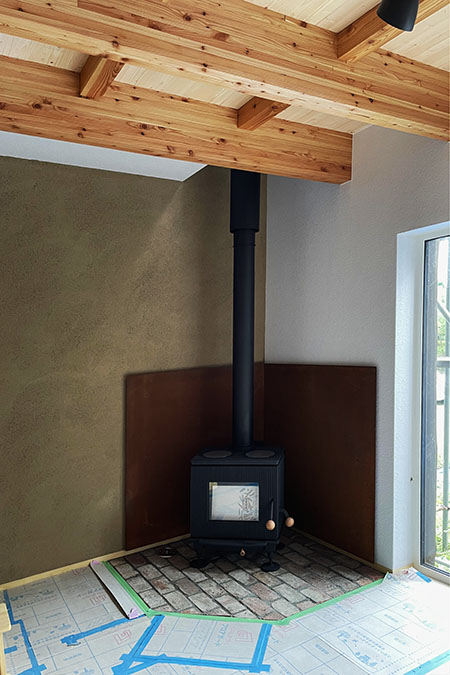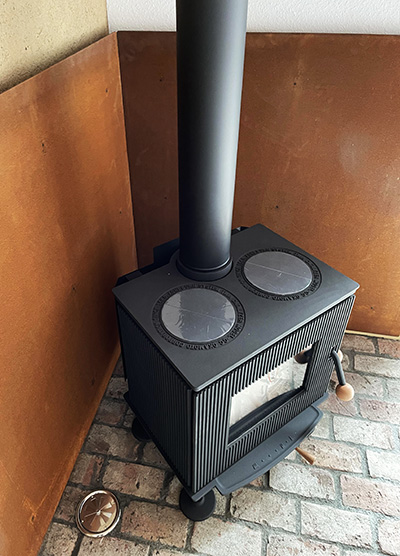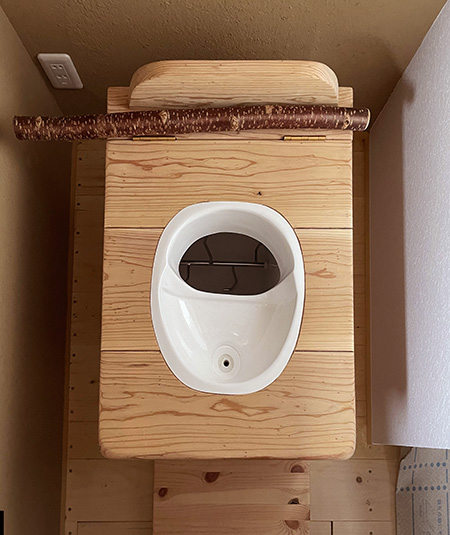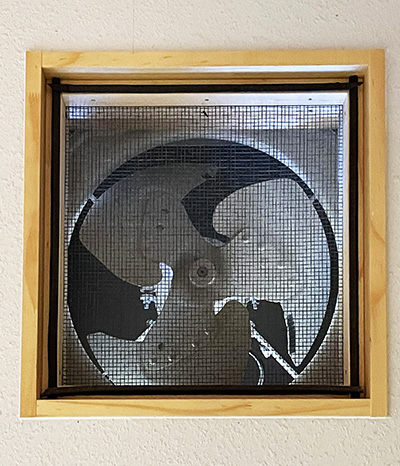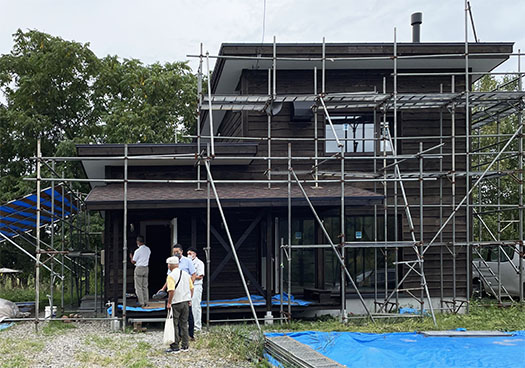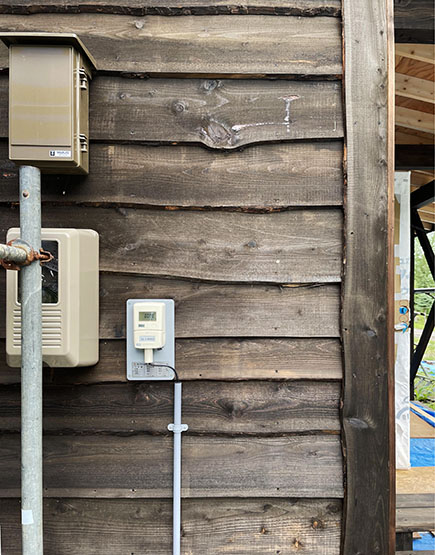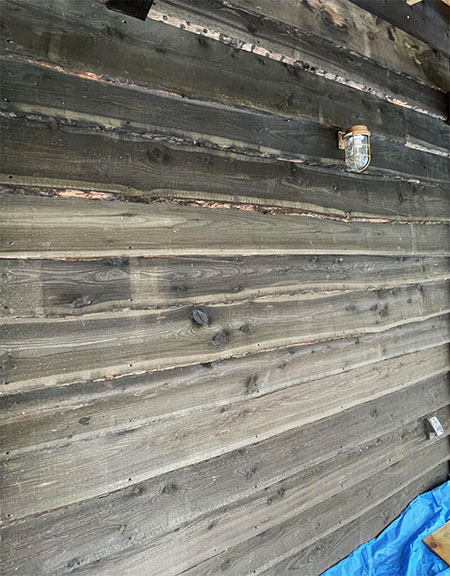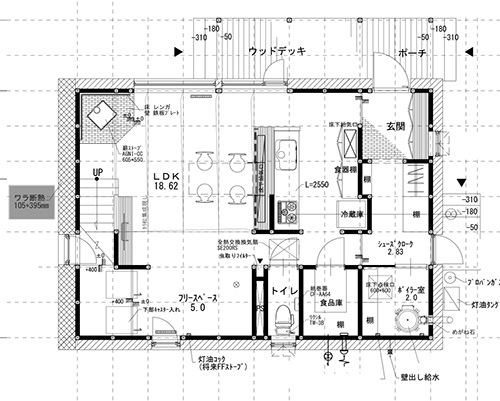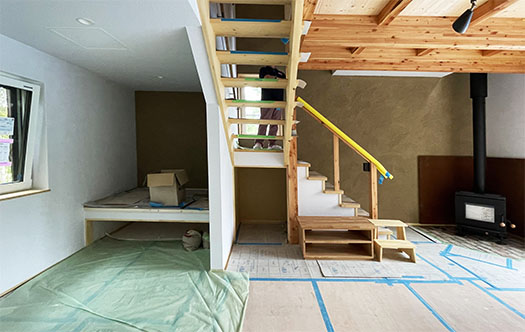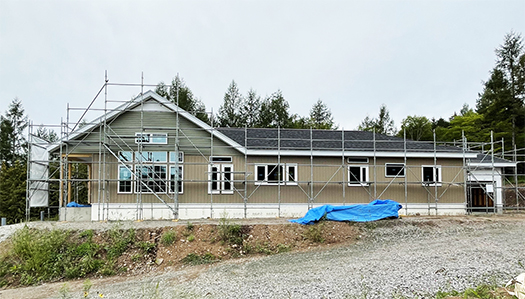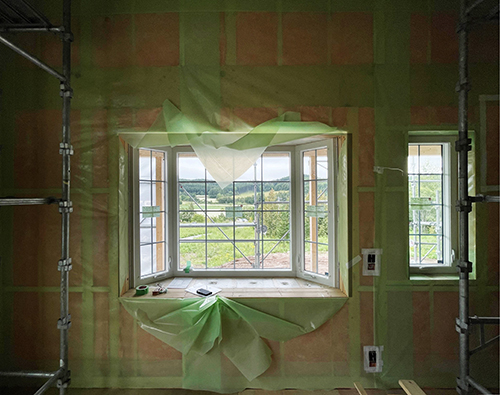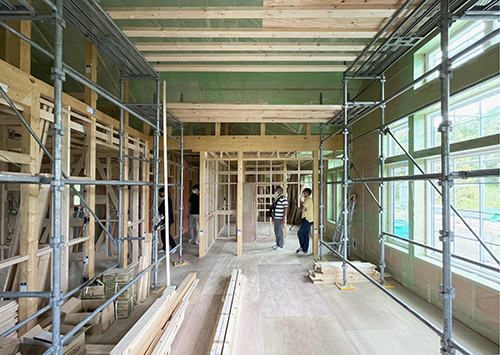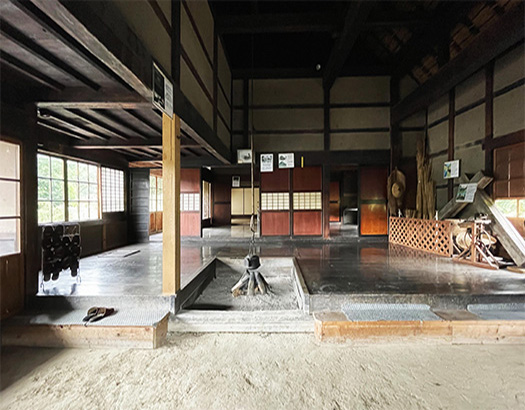


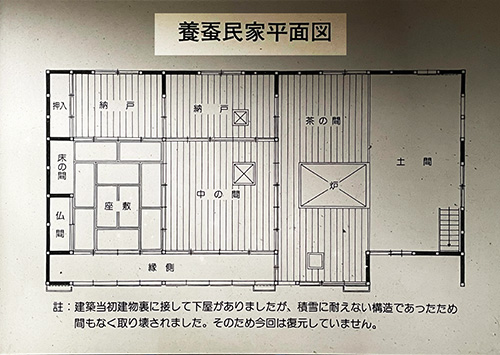
道北旭川の養蚕民家探訪篇、その4です。
そもそも蚕を育てるということは、室内環境にデリケートであること。
以下に蚕の生態と繭に至るプロセス。
●蚕を育てる
卵からふ化した蚕に1ヶ月ほどエサの桑の葉を与える。この間に蚕は
4回の脱皮を繰り返して次第に大きくなる。最後の脱皮後はエサを食べなくなり
カラダが透き通ってきます(熟蚕)。熟蚕になると蚕籠(さんろう)に移す。
●生糸を吐かせる
熟蚕は生糸を吐いて体を覆う繭を作る。熟蚕に糸を吐かせるために安置する床を
「蚕籠」という。蚕籠に入ると蚕はほどなく繭を作り始める。
数日で繭は固くなりおよそ1週間で繭の取り入れをする。
蚕の飼育にはデリケートな「環境要件」が必要になる。
特に採光・通風・保温という「住宅性能」に深い注意を払う必要がある。
寒冷地での養蚕建築の適合ポイントとしてこの建物では
1 部屋の仕切りをすべて引き戸として風通しを考えた大空間志向。
2 土間大空間に大型の中央炉、その他3箇所の炉を切って
暖房用火力を強化し吹き抜け大空間とする。高所に排気用の煙り出しを確保。
3 蚕棚を組み上げるため、2階を吹き抜けとする大空間確保
4 半切妻で開口部を作ったり、階高を高くして採光を十分に取り入れる工夫。
5 屋根は重厚な茅の厚みでの「断熱」を計っている。
などの「知恵と工夫」の痕跡が垣間見える。
この養蚕民家の建設年は1909年・明治42年。
時限的中央省庁として12年で閉庁した開拓使から北海道庁に
地域開発の主管は変わっているけれど、
日本の北方防衛の国家的重要地域・北海道の地方政府のDNAとしては
住宅保温性能の向上には非常に高い関心を持ち続けてきていた。
この地に多くの日本人が永住し続けること、その環境、とくに
住環境を発展させることは、国家防衛の最重点関心事でもあった。
私見ですがこの国家的主要テーマ設定について、日本は
「民政」中心の施策で推進してきたと思えています。
国防防衛がそのまま民の殖民であったこと、それが寒冷地であり
国家としても十分な知見をあらかじめは持っていなかったことについて
いかにも「民中心」の施策を取ってきた事実が確認できる。
開拓民の暮らしようを十分に理解し、その生活が向上するように
さまざまな意味で基底のしっかりした対応施策を行ってきた。
やはり日本の権力の系譜の中で尊皇という至上テーマが明確にあり
いわば権力の背骨として、民を「おおみたから」とする民主主義が存在する。
聖徳太子の基本政策「和を以て貴しと為す」思想が根底にある、という意味で
古代以来、ながく「民主主義」の実質が存在すると思えるのですね。
明治期以降の北海道にはその施策態度が根底に息づいていると思う。
最初期の開拓使責任者である黒田清隆に至っては住宅視察先で自ら大工として
屋根の柾葺き工事に飛び入り参加するほどに住宅政策にのめり込んでいる。
維新を主導した明治の軍人・政治家としての気概が伝わってくる。
開拓使時代には洋造住宅としてアメリカの2×4工法の原型である
バルーンフレーム工法を公共建築に採用したりしていたけれど、
産業政策の養蚕建築について北海道建設指導課はどの程度興味を持ったか
今度、調べてみたいとも思っています。
連載としてこの旭川・養蚕民家を深掘りテーマとしてきていますが、実は
パソコン環境でトラブルが発生してその対応に1週間程度時間が掛かりそうです。
写真データに関することもあるので、この4回目でいったん休止して、
連載は後日再開させる予定。なるべく早く復帰したいと思います。
悪しからず了解ください。
English version⬇
Wisdom and Ingenuity for Cold Region Environment, Heating Reinforcement: Sericultural Houses in Higashi-Asahikawa-4
Housing policies for cold regions since the Meiji Era are Japanese “democracy” that supports the people’s lifestyle. The people are “Ohimitakara” people. ・・・・.
This is the fourth part of the silkworm-raising private house in Asahikawa, Hokkaido.
To begin with, raising silkworms is delicate to the indoor environment.
The following is a description of the ecology of silkworms and the process of making cocoons.
Raising silkworms
Silkworms hatching from eggs are fed with mulberry leaves for about one month. During this period, the silkworms
molt four times during this period and gradually grow larger. After the last molt, the silkworm stops feeding and its body becomes transparent.
After the last molt, the silkworm stops eating food and its body becomes translucent (mature silkworm). When the silkworms reach maturity, they are transferred to a cage.
The silkworms are made to shed their raw silk.
Mature silkworms emit raw silk to make cocoons that cover their bodies. The floor on which the ripe silkworms are placed in order to make them shed their raw silk is called a “silkworm cage.
The floor on which the ripe silkworms are placed to make them shed their silk is called the “silkworm cage”. After entering the cage, the silkworms soon begin to make cocoons.
The cocoons harden within a few days, and the cocooning process takes about a week.
Breeding silkworms requires delicate “environmental requirements.
In particular, it is necessary to pay close attention to “housing performance” in terms of lighting, ventilation, and heat retention.
In this building, the following points were taken into consideration as points of conformity for sericultural architecture in cold climates.
1. All room partitions are oriented toward large spaces with sliding doors for ventilation.
2. A large central furnace and three other furnaces are installed in the large earthen floor space.
The large central furnace is installed in a large earthen floor space, and three other furnaces are installed in other places to enhance the heating power. A vent for exhaust air is located at a high place.
3 To assemble the silkworm racks, a large atrium space is secured on the second floor.
4 Devices to create openings with half gables and to raise the height of the floor to take in sufficient lighting.
5 The roof is designed to “insulate” with a heavy thickness of thatch.
The roof is designed to “insulate” the house with a heavy thickness of thatched roofing.
This sericultural private house was built in 1909, the 42nd year of Meiji era.
The Hokkaido Development Office, which closed after 12 years as a temporary central government agency, was replaced by the Hokkaido Government.
Although the main responsibility for regional development has changed, the Hokkaido Government still has the responsibility for the development of the region.
Although the main jurisdiction of regional development has changed, the DNA of the local government of Hokkaido, a region of national importance for Japan’s northern defense, is still very much in place.
The local government of Hokkaido, a nationally important region for Japan’s northern defense, has maintained a strong interest in the improvement of housing thermal insulation performance.
The continued permanent residence of many Japanese people in this region and the development of its environment, especially the
The development of the housing environment has also been a top priority concern for national defense.
In my opinion, Japan’s “civil administration” was the key to this major national theme.
In my opinion, Japan has been promoting this major national theme through “civil administration”-centered measures.
The defense and defense of the nation was the colonization of the people as it was, and it was in a cold region.
and that the nation did not have sufficient knowledge of the situation beforehand.
It is possible to confirm the fact that the government has been taking “people-centered” measures.
The government fully understood the way of life of the pioneers, and took various measures to improve the lives of the pioneers.
The government has taken measures with a solid foundation in various ways to improve the lives of the pioneer people.
After all, the supreme theme of the emperor is clearly present in the lineage of Japanese power, and the emperor is the backbone of power.
In other words, as the backbone of power, there exists a democracy in which the people are regarded as “oomitokara” (the people).
In the sense that the basic policy of Prince Shotoku, “Harmony is the most important thing,” is at the root of this policy, democracy has existed since ancient times.
It seems to me that the substance of “democracy” has existed for a long time since ancient times.
I believe that this policy attitude is still alive in Hokkaido since the Meiji period.
Kiyotaka Kuroda, the first head of the Hokkaido Development Office, was a carpenter himself when he visited Hokkaido to inspect houses.
He was so involved in the housing policy that he even jumped in to participate in the masa-itching of roofs as a carpenter on a housing inspection tour.
This shows the spirit of the Meiji soldiers and politicians who led the Meiji Restoration.
During his pioneer days, he used the balloon frame construction method, a prototype of the American 2 x 4 construction method, for public buildings as Western-style housing.
The balloon frame construction method, a prototype of the American 2 x 4 construction method, was adopted for public buildings during the pioneer days.
How interested was the Hokkaido Construction Guidance Division in the sericultural architecture of industrial policy?
I would like to find out how interested the Hokkaido Construction Guidance Division was in sericultural construction.
I have been focusing on the Asahikawa silkworm farm houses as a series of articles, but I have actually been having trouble with my computer environment and have been trying to deal with it.
However, there is a problem with my computer environment, and it will take about a week to solve it.
I have to deal with some issues related to the photo data, so I will pause the series after this fourth installment and resume it at a later date.
I will resume the series at a later date. We hope to be back as soon as possible.
We apologize for any inconvenience this may cause.
Posted on 9月 17th, 2022 by 三木 奎吾
Filed under: 住宅マーケティング, 住宅性能・設備, 古民家シリーズ | No Comments »




